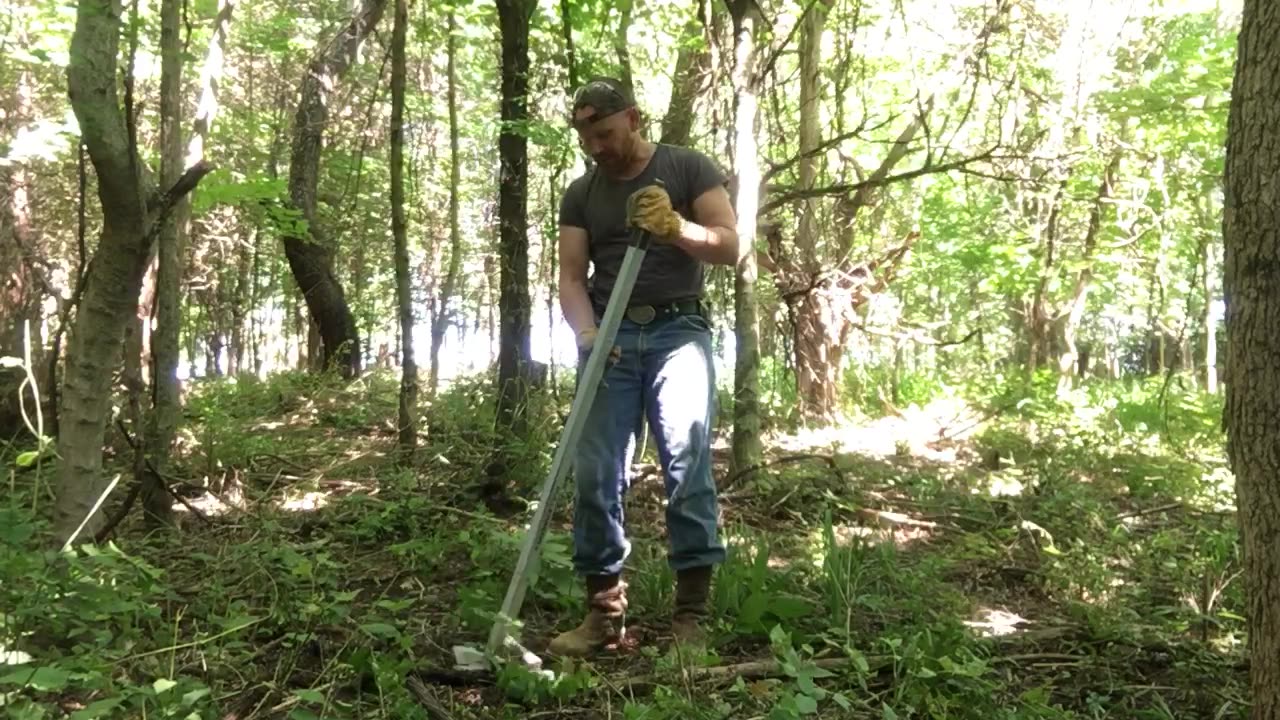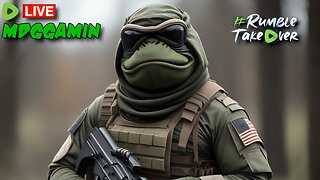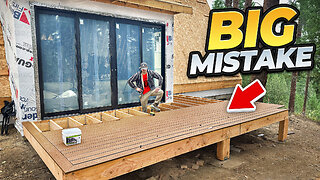Premium Only Content

Deeper Review on Mechanical Removal of Bush Honeysuckle Using the “Pullerbear Pro - XLT”
This video goes a little more in depth with the techniques I use for the second stage of bush honeysuckle removal using the Pullerbear pro, and some personal safety tips while working out in the forest.
Non-native Bush Honeysuckle like Amur (Lonicera maackii), Morrow’s (Lonicera morrowii), and Tatrian (Lonicera tatarica) will out-compete native forbs and bushes because it is the first to leaf out in the spring, and last to lose its leaves in the fall.
Some things to report from this visit during this video - for research data, and for other forest and wildlife managers:
I have been noticing that a few of the large stems that were cut last fall were trying to regrow roots on those cut ends, and were also sprouting green shoots of leaves. Though in total this was an uncommon occurance, there was a greater prevelance in areas with higher soil moisture present such as near a stream-bed or in deeper shaded areas. Although these were easily dislodged by a nudge of the foot or picking them up to break contact of the new root system with the soil, it goes to show the competativeness of the species and the importance of followup visits after the initial treatment stage.
This data lends weight to my opinion that there would be an advantage of using a controled burn of the forest floor early in the spring prior to the other trees and plants coming out of dormancy. This should remove the stems and sprouts of the Bush Honeysuckle that might be trying to retake the forest floor. As I have done in my treatement areas, It would be important to keep the woody fuel of the branches and trunks of the honeysuckle close to the ground. By taking extra time to cut the branches until they lay near the forest floor, no only does it help with the ease of mobility within the forest, it will also help carry the fire through the forest once lite; also decreasing risk of the fire burning to hot and traveling higher into the canopy.
Observations of stumps treated with Tordon RTU shows anectdotal data that the method of application has a high success rate, with only a few occasionally having enough resistance to avoid death and send sprouts back up in the spring.
Sprouts from smaller stems, which were cut down in this first treatment to avoid having pungy sticks left behind causing a tripping hazzard, did resprout as expected. These stems were cut low on the first treatment to avoid possible injury of someone falling on the stems. This stems do show signs of stress where the majority of them have visible leaf desication on the edges of a few leaves per plant. Not sure if this is from the stress of the cutting late in the fall, or if it is from some disease affecting only the bush honeysuckle species.
Areas treated with mechanical removal have shown promising signs of regenerated native species in the understory, and a comparison between the diversity of species present is suggested when compairing a fall treatment vs. an early spring treatment using the mechanical method with a direct chemical application to large stumps.
Tools used for treatment:
Stihl Kombimotor - Brushsaw blade
Tordon RTU
Stihl Chainsaw (Model MS 271 "Farmboss")
Pullerbear Pro XLT (https://pullerbear.com/)
Foam Brush (for Direct Chemical Application on cambium of stumps).
-
 3:32:31
3:32:31
United Fight League
16 hours agoUFC 309 Watch Party w/ Rampage Jackson, Maycee Barber, Demi Bagby, and Harrison Rogers
122K8 -
 2:35:52
2:35:52
Jewels Jones Live ®
1 day agoELECTION OVER - LIES CONTINUE | A Political Rendezvous - Ep. 100
40.6K71 -
 3:59:18
3:59:18
GamerGril
18 hours agoPAGING ALL ZOMBOIZ | DEAD ISLAND 2
159K20 -
 42:24
42:24
MYLUNCHBREAK CHANNEL PAGE
1 day agoA Century Gone
172K131 -
 38:22
38:22
Stephen Gardner
19 hours ago🔥HOLD ON! The RUMORS about Kamala are TRUE...
211K593 -
 1:22:44
1:22:44
Michael Franzese
1 day agoWill Trump’s Win Finally Convince Democrats to Stop The Woke Nonsense??
187K164 -
 8:27:07
8:27:07
MDGgamin
23 hours ago🔴LIVE- Rumble Gaming To The MOON - Variety of Games & Chatting - #RumbleTakeover
163K5 -
 27:24
27:24
Mr. Build It
6 days agoDECK DISASTER! How We Fixed a Botched Build
125K16 -
 26:58
26:58
barstoolsports
23 hours agoZach Bryan Blocks All of Barstool | Stool Scenes
133K19 -
 1:06:44
1:06:44
Talk Nerdy 2 Us
1 day ago🔥 Hackers vs. The World: From Amazon breaches to FBI-confirmed Chinese telecom spying
121K23